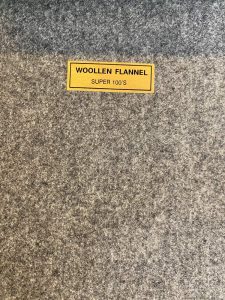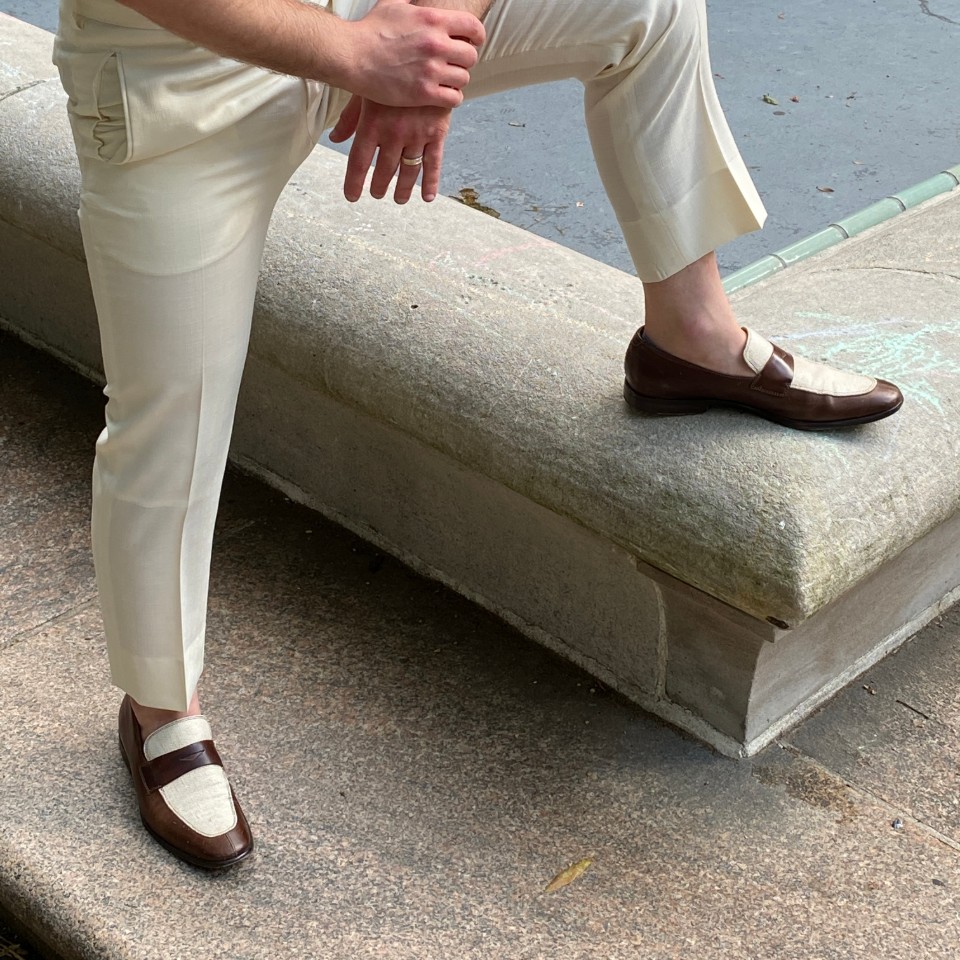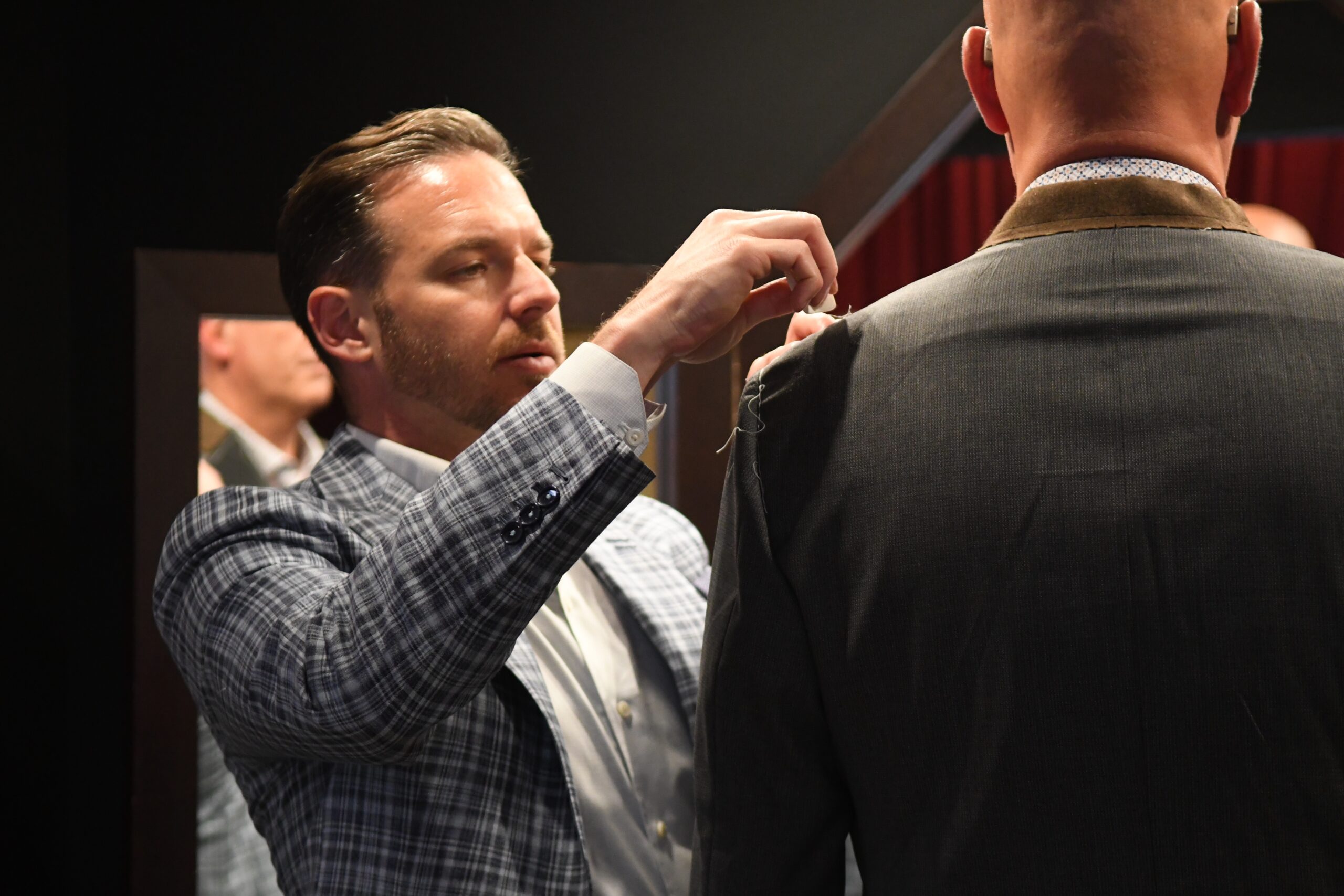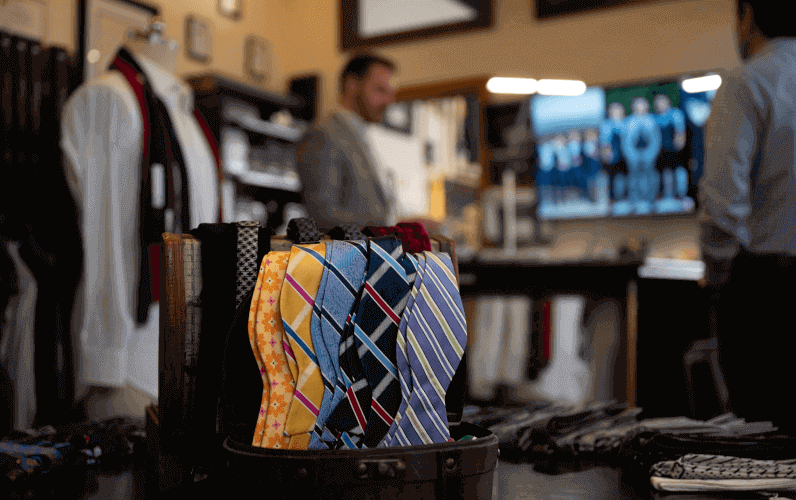After learning about construction and fit, a suit’s fabric is the third crucial factor in discerning its quality.
For the purposes of this post, we’ll limit our discussion of fabric to wool. Just be aware that high-quality suits can be made of wool, cotton, linen, silk, cashmere, mohair, and various blends of these materials.
Wool
 Wool is the fabric used for the vast majority of suits, and only merino sheep can produce superfine wool for suitings. These sheep are found in Australia and New Zealand and produce the most economically influential wool in the world.
Wool is the fabric used for the vast majority of suits, and only merino sheep can produce superfine wool for suitings. These sheep are found in Australia and New Zealand and produce the most economically influential wool in the world.
Properties of wool:
-
- It breathes: Wool is comprised of many yarns that have been woven together. Any natural fiber that is woven together will allow air to pass through, keeping you more comfortable.
- It’s durable: If you take good care of wool, it will take good care of you. Properly maintained wool suits can last up to 30 years.
- It’s moisture-resistant. Wool has a fat in it called “lanolin,” which is water-repellant. While we don’t recommend wearing a wool suit intentionally in the rain, it’s still difficult to soak. Its hydrophilic nature means it can absorb up to 30% of its weight in moisture without feeling wet. Cotton, on the other hand, feels soaked at a measly 8%.
- It has memory: High-quality fiber has a high level of “elastic recovery,” which translates to wrinkle resistance and springiness. Furthermore, it can hold a crease in a way other fibers just can’t.
- It takes color beautifully: Wool is very sympathetic to the dyeing process, and you can find wool in just about any color imaginable.
- It’s naturally flame resistant: We advise wearing casual clothes while near open flames, but if you’re at a cigar bar and a mishap occurs, you might just be alright.
- Anti-static: Wool’s ability to absorb moisture from the air or your body prevents static from building up and causing uncomfortable clinging.
- Absorbs odors: Wool’s unique chemical structure and other properties help prevent the buildup of bacteria, sweat, and unpleasant smells
- Resists staining: Wool has a water-resistant outer layer and tightly packed fibers that prevent liquids from penetrating the fabric. In fact, wool is more than 30% more stain resistant than synthetic fibers.
Super Numbers: How Wool is Classified
 Lots of men have seen terms such as “Super 130’s wool.” Lots of otherwise well-meaning salespeople will tell their clients that higher super numbers translate to a better suit. A suit’s quality is based on more than fabric, as we’ve discussed on other pages. Still, what does “Super xxx’s” even mean?
Lots of men have seen terms such as “Super 130’s wool.” Lots of otherwise well-meaning salespeople will tell their clients that higher super numbers translate to a better suit. A suit’s quality is based on more than fabric, as we’ve discussed on other pages. Still, what does “Super xxx’s” even mean?
To break it down very simply, the super number tells you how fine the individual fibers are. Finer fibers get higher Super numbers, and vice-versa. This is a perfectly accurate, if technically incomplete, way to think about super numbers.
Still, this isn’t the whole story. To truly understand Super numbers, we need to define a “hank,” which is a spool of 560 yards of yarn that can be spun from one pound of raw wool.
The Super number tells us the number of hanks that can be spun from a pound of raw wool. Is your suit made from Super 100’s wool? One-hundred hanks could be spun from the raw product that suit was made from. You get 140 hanks from Super 140’s, 80 from Super 80’s, and so on. Finer fibers mean more hanks can be spun, and the “high super number means a finer fabric” rule still holds.
While the International Wool Textile Organization (IWTO) serves as the international standard for the Super system, they only set rules as to an S number’s maximum fiber diameter. For example, a Super 80’s wool cannot exceed 19.75 microns (one-millionth of a meter) in diameter. Certain luxury mills like the ones we partner with use more robust standards, so these numbers should be used as a guide, not a rule.
What Super Number Makes The Best Suits?
 We don’t mean to be cagey, but the answer is “it depends.”
We don’t mean to be cagey, but the answer is “it depends.”
Generally, Super 100’s through Super 130’s are a sweet spot in which you get a sumptuous handle combined with robust performance. Ranges below Super 100 often perform well but don’t have much in the way of a luxurious feel. Conversely, ranges above Super 130 feel incredible in the hand, but their delicacy means that they won’t perform as well in the long run, breaking down before suits made with lower Super number fabrics. After the Super 180 range, we’re talking about luxury for luxury’s sake.
If you’re making a suit that you plan to wear once or twice a week, go with a Super 120 or thereabouts. If you’re making a tuxedo that you’ll wear maybe once a year, splurge and go for the finer Super 150.
In Conclusion
A suit’s fabric is important, for sure. Contrary to what most retail salespeople will tell you, fabric is not the deciding factor in what makes for a “good” suit. Consider your end use, how hard you wear your garments, and how often you plan to wear them before deciding on one fabric over another.
Our image consultants are well-positioned to help you make a choice on a fabric that best suits you. Contact us today to schedule a consultation.




